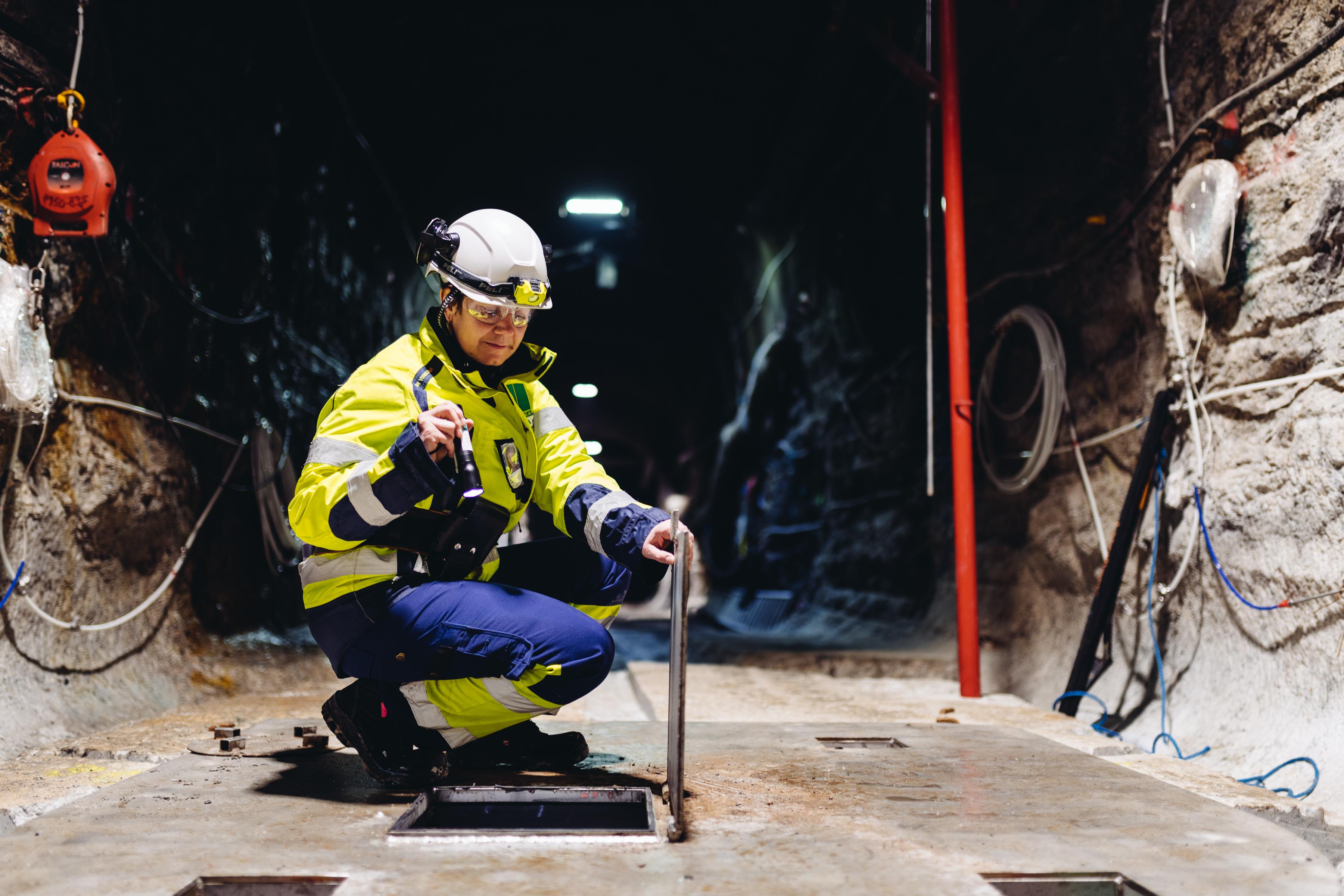Nuclear waste management
The types of nuclear waste generated at a nuclear power plant include waste exempt from control, low and intermediate level operating waste, and high-level spent fuel. Posiva Oy is responsible for the final disposal of spent nuclear fuel generated at the power plants of its owners, TVO (Olkiluoto NPP) and Fortum (Loviisa NPP).
Compared to the volume of produced energy, however, the amount of waste and its space requirements are low. The principle of nuclear waste management is to isolate the waste from organic nature until the radioactivity of the waste has decreased to an insignificant level.
The responsibility for nuclear waste management lies with the nuclear power companies. They must carry out the necessary nuclear waste management measures for their own waste at their own cost. According to the Finnish Nuclear Energy Act, nuclear waste generated in Finland must be treated, stored, and finally disposed of in Finland and the import of nuclear waste into Finland is prohibited.
Spent nuclear fuel from the nuclear power plants of Teollisuuden Voima and Fortum will be packed in copper canisters and embedded in the Olkiluoto bedrock at a depth of approximately 430 meters. Posiva manages the research into the final disposal of spent nuclear fuel, construction and operation of final disposal facilities, and eventual closing up of the facilities on behalf of its owner companies.

The final disposal of spent nuclear fuel is based on the use of multiple release barriers, which ensure that the nuclear waste cannot be released into organic nature or become accessible to humans. A deficiency of a single barrier or a predictable geological or other change will not endanger the performance of the insulation. The release barriers include the physical state of the fuel, the disposal canister, the bentonite buffer, the backfilling of the tunnels, and the surrounding rock.
The key to the final disposal of spent fuel is the long-term safety of the solution, which is assessed and demonstrated with a safety case. According to the international definition, a safety case refers to all technological and scientific materials, analyses, observations, trials, tests and other proof used to justify the reliability of the assessments made of the long-term safety of final disposal. Plenty of time has been reserved for the preparation and practical execution of final disposal, and safety is evaluated at many stages. The disposal of spent fuel is scheduled to begin in the 2020s, and it will continue for approximately a hundred years.
Posiva’s solution for the final disposal of spent nuclear fuel enables the sustainable production of nuclear electricity. - IAEA Director General, Rafael Mariano Grossi
In 2019, Posiva started the EKA project, which aims at initiating final disposal operations in the 2020s. The project involves constructing an above-ground encapsulation plant and installing the systems for final disposal in the underground ONKALO facility, obtaining the requisite licenses for the final disposal concept, the facility and its systems, and preparing the supply chains needed for production, before starting the actual final disposal of spent nuclear fuel. The EKA project has a strong impact on vitality - the cost estimate of the large scale construction project is approximately EUR 500 million, and its employment impact is approximately 2,500 person years. The project will employ a maximum of some 500 people.
Finland is the only country so far to progress to the implementation phase of final disposal, which makes the EKA project internationally significant. Posiva plays an important role in the mitigation of climate change as part of the lifecycle of nuclear power. Many countries using nuclear power have final disposal repositories for low- and intermediate-level waste, but the final disposal of high-level spent fuel has not yet been started anywhere.
Find out more about Posiva here.